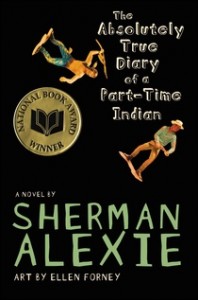Our memory is our coherence, our reason, our feeling, even our action. Without it, we are nothing. —Luis Bunuel
Just as memory is essential in defining us as individuals, so is it essential in defining families and the larger communities of which we are a part. In his work On Collective Memory, Maurice Halbwachs defines “collective memory” as a shared memory composed of group experiences that informs behavior and identity. Collective memory is different from history in that it is “living” and it is actively shaped by individuals within the group.
Young adults are responsible for understanding, absorbing, and contributing to the collective memories of the various communities and groups to which they have membership. They must listen and learn from older members of their groups and, in turn, teach the younger members. In literature, young adult characters are often shown grappling to understand their community’s collective memory with the assistance of an older character.
Literature on the Theme
The books reviewed here are representative of the theme of Collective Memory; this is not a comprehensive list. Novels are listed alphabetically by authors’ last names.
*
 The Absolutely True Diary of a Part-Time Indian, by Sherman Alexie
The Absolutely True Diary of a Part-Time Indian, by Sherman Alexie
Little, Brown, 2007; 240 pages
Sherman Alexie’s first YA novel, The Absolutely True Diary of a Part-Time Indian, is the story of teenaged Junior, who is determined to improve his life by leaving his Spokane reservation to attend school, where he finds life difficult as the only Indian.
Junior has a close relationship with his grandmother, who, in the spirit of oral tradition, shares with Junior the stories of her past. According to Junior, his grandmother is a living connection to history, always wearing her 70’s dress and Junior’s grandfather’s belt, while cooking the best traditional salmon mush and speaking at the Spokane Tribal Community center powows. Although he is trying to leave the reservation, Junior feels a positive connection to his history and his community through his relationship with his Grandmother Spirit.
*
 Postcards from No Man’s Land, by Aidan Chambers
Postcards from No Man’s Land, by Aidan Chambers
Red Fox, 1999; 336 pages
The narrative of Postcards from No Man’s Land is divided between the present-day voice of Jacob, a young man visiting the Netherlands on behalf of his grandmother, and the memoirs of Geertrui, the elderly woman he is there to visit. Geertrui remembers the days she knew Jacob’s grandfather and namesake in his last days during the trials and tribulations of World War II.
While in the Netherlands, Jacob participates in the battle ceremony at Oosterbeek, honouring the fallen and visiting his grandfather’s grave. As Jacob reads Geertrui’s memoirs, he gets to know some secrets of the grandfather he never knew, and gains a greater understanding of life in the Netherlands during the War—an understanding beyond what he had gleaned from his favourite book, The Diary of Anne Frank. Jacob discovers that his own history is inextricably linked to the Netherlands when he learns Geertrui bore his grandfather’s child, making her and her family part of his.
*
 The Giver, by Lois Lowry
The Giver, by Lois Lowry
Houghton Mifflin Harcourt, 1993; 192 pages
The Giver is set in a futuristic society which appears utopian on the surface—every member has his or her basic needs met and every member has a role. Pain has been eliminated, as has memory of the community’s past collective experience. However, as the novel progresses the reader comes to learn that the surface harmony is achieved by eliminating happiness and choice along with pain, as well as destroying all factors that clash with the “sameness” that they strive for.
The novel’s protagonist is a twelve-year-old boy named Jonas who has just been given the role of Receiver of Memory, the only member of the society to have memory and knowledge of its past. Jonas is guided by the current Receiver, a very old man who passes the community’s memories to him. For the first time Jonas experiences deep emotions and knows the feelings of joy, as well as deep sorrow. Jonas comes to realize the importance of these memories, and questions his community’s choices.
*
 A Step From Heaven, by An Na
A Step From Heaven, by An Na
Front Street, 2001; 156 pages
Young Ju’s grandmother Halmoni is like a door to a time before her own, when, as Halmoni tells it, Young Ju’s grandfather Harabugi was alive and could stop Young Ju’s father from beating her mother. While her grandmother prays, Young Ju studies the photograph of her grandfather, who she notices has “nice eyes” like her disappointing father. Shortly afterward, Young Ju and her family move to America, leaving her grandmother behind, to Young Ju’s great sorrow. Young Ju does not know that she will never see her grandmother again, who dies just before Young Ju turns thirteen. Although rendered tenuous by distance and time, Young Ju’s relationship with her grandmother provides her with an important link back to Korea, a place she still remembers vividly, but can no longer call home. The death of her grandmother leads Young Ju to revisit images and moments from her early childhood in Korea, critical pieces in the puzzle of her own heritage and family history.
*
 Holes, by Louis Sachar
Holes, by Louis Sachar
Frances Foster Books, 1998; 233 pages
Stanley Yelnats IV is mistakenly arrested for the theft of a famous athlete’s shoes, and sent to a prison camp where delinquent boys dig holes in the desert. Unbeknownst to them, the camp Warden is searching for the buried treasure of a famous outlaw that changed (or rather stole) the fortunes of Stanley’s ancestor. Seamlessly integrating snippets of the (fictional) historical events, the author wraps things up in a neat package, resolving the family curse and somehow justifying Stanley’s unwavering belief in his father’s stories of the family history.
*
 Persepolis: The Story of a Childhood, by Marjane Satrapi
Persepolis: The Story of a Childhood, by Marjane Satrapi
Pantheon, 2003; 160 pages
Persepolis details Marji’s coming-of-age during the peak of the Islamic Revolution, and reveals the stark contrast between the public portrayal of Iranian life and the reality of the situation. The story is told through the eyes of rebellious Marji, whose experiences are exciting, tragic, and comical—from riots and revolution to secrets, torture, and death.
The preservation of memory and history is a major theme of Persepolis, which—right from its introduction—provides readers with a brief but thorough history of Iran. Marji is lucky to have family that strives to ensure that she does not forget their history; her grandmother paints stories of their once-royal family’s fall from power, while her Uncle Anoosh educates her on Iran’s political past. Marji clearly respects the relationship she has with her grandmother and uncle, as she listens eagerly to their history. Both Marji’s grandmother and uncle encourage her to retain the stories she hears. Looking back on those moments, Marjane recalls, “I realized that I didn’t understand anything. I read all the books that I could… I’d never read as much as I did during back on that period” (32-33). Persepolis itself is proof that Marji retained the stories from her past, and is still ensuring their survival.
*
 Maus: A Survivor’s Tale, by Art Spiegelman
Maus: A Survivor’s Tale, by Art Spiegelman
Pantheon Books, 1991; 296 pages
Maus: A Survivor’s Tale is a graphic novel in which author Art Spiegelman shares his father, Vladek Spiegelman’s, experience as a Holocaust survivor. Maus is structured as a story within a story, and the narrative shifts between Vladek’s memories and the present-day relationship between father and son.
Memory is an important theme in Maus, in terms of the individual memory of the father, the transaction of family memory from father to son, and the sharing of memory with the reader. Personal accounts such as Vladek’s also help to strengthen the collective memory of Holocaust survivors and other people who are affected (everyone). Furthermore, Maus asks the reader to consider whether the power of memory can prevent catastrophes like the Holocaust from repeating.
*
 Between Heaven and Earth, by Eric Walters
Between Heaven and Earth, by Eric Walters
Orca Book Publishers, 2012; 245 pages
Seventeen-year-old DJ is the eldest of his deceased grandfather’s grandsons. When the will is read, the family discovers there is a seventh grandson no one else knew about, and each grandson is given a separate mission to accomplish. Eric is sent to climb Mount Kilimanjaro in Tanzania and scatter his grandfather’s ashes from the top. Starting off with full confidence, DJ soon finds that success will require all of his strength and endurance, and that he must learn to rely on others. Tricked into demanding Sarah, the teenage daughter of his guide, be hired as one of the porters, DJ finds himself isolated from the disapproving locals, not only because it is Sarah’s first time on the mountain and she has not yet proven herself, but mainly because she is a woman. DJ is left only with Sarah and Doris, an elderly woman, for traveling companions.
As DJ journeys to Tanzania, and up and down the mountain, he is conscious of all the time his grandfather had spent in the country as a young man. Following in his grandfather’s footsteps gives him an eerie sense of his family history.
*
Other themes: Mortality // Learning, Knowledge and Wisdom // Unconditional Love // Legacy
